Table of Contents |
The art that we’re looking at today dates from between 1920 and 1942.
Regionalism, in a nutshell, is an anti-Modernism movement that reached its height during the Great Depression. It explores American identity through scenes celebrating rural life. The Great Depression was a worldwide economic downturn in the 1930s and 1940s that saw significant declines in production, spending, and trading, and rises in unemployment, reaching around 25% unemployment in the United States alone.
The events leading up to and causing the Great Depression are still debated today. In chronological terms, most agree that the stock market crash of 1929 marks the beginning and with the depression abating, in the United States at least, around the beginning of its entry into World War II in 1941.
The Depression and concurrent Dust Bowl of the Midwest and Great Plains decimated the local economies. Crops literally turned to dust, and thousands of farming families were displaced as a result. One of the largest migrations in hopes of finding a better living was the famous migration from Oklahoma to California, which served as the backdrop for the literary classic The Grapes of Wrath.
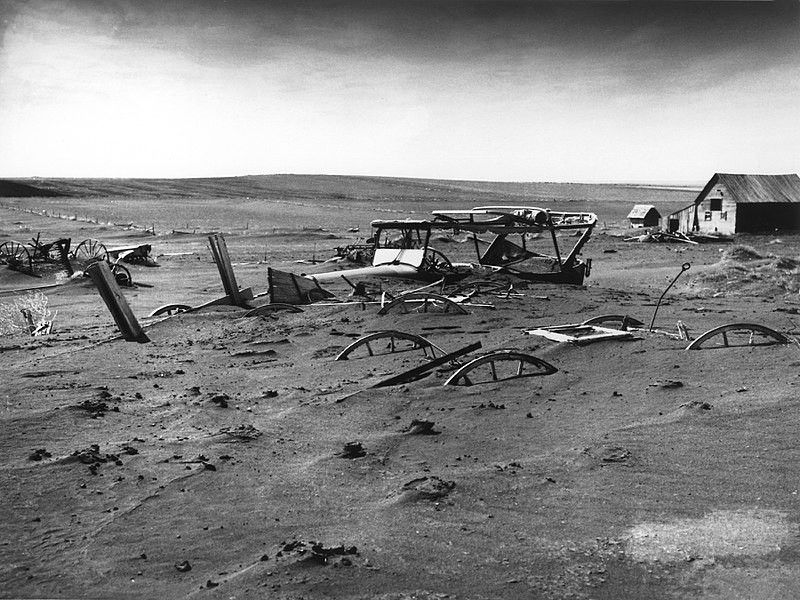
1936
Dallas, South Dakota
The plight of western migrant workers and sharecroppers from the South served as the subject matter for the photography that you’re looking at in this lesson.
The first pieces of art to look at today are two paintings. The first is by the Midwestern artist Thomas Hart Benton.
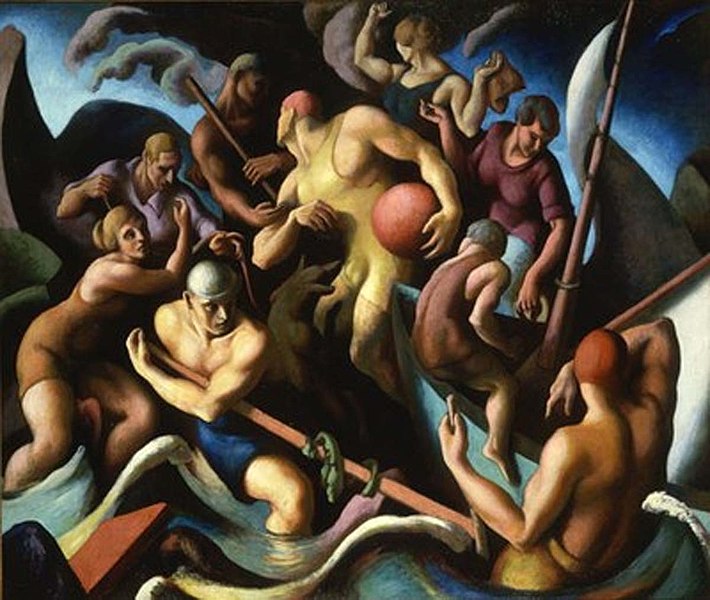
1920
Oil on canvas
Though he was born in Missouri, Benton wasn’t confined there. He studied in Chicago and Paris and spent considerable time in New York and the Northeast. “People of Chilmark” is set in the town of Chilmark on Martha’s Vineyard, which is an island south of Cape Cod in Massachusetts. In terms of subject matter, it’s a group of people at the beach, but definitely recalls romantic works of art, such as Géricault's “Raft of the Medusa”, in how the bodies are intertwined and dramatically postured.
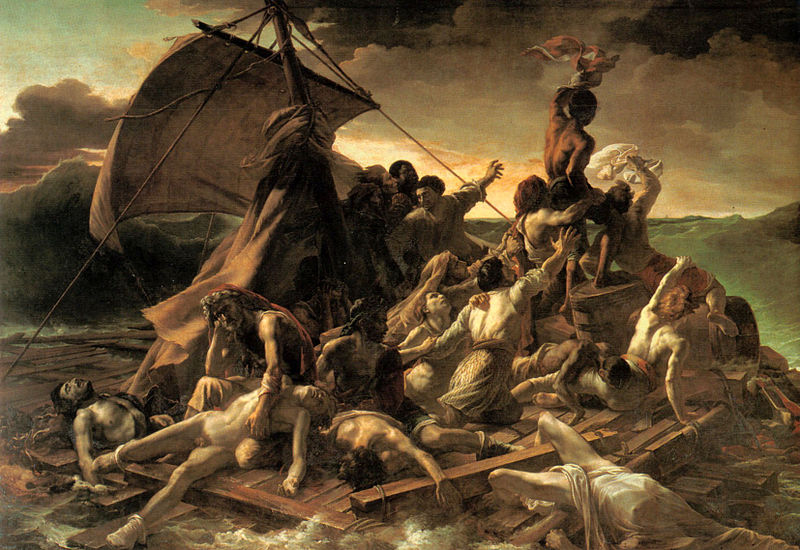
1818-1819
Oil on canvas
His style is quite unique. He rejects traditional depictions of perspective and uses vivid colors, bold contrasts, and pliable-looking figures to fill this composition. Benton’s subject matter is characteristic of a number of artists who rejected modernism, in favor of depictions of rural life. This choice came to be known as regionalism, which is an anti-modernist movement that reached its height during the 1930s and during the Great Depression.
Grant Wood’s “American Gothic” has become one of the most iconic paintings of all time, sharing a tiny place among paintings such as the “Mona Lisa” and Edvard Munch’s “Scream.”
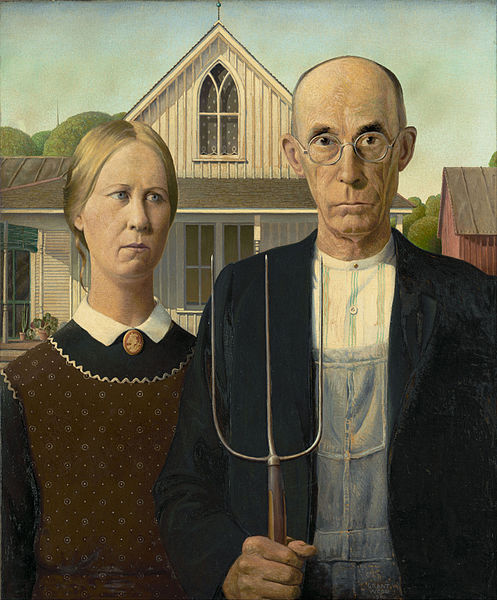
1930
Oil on beaverboard
The name of the painting derives from the house in the background, which is a real building in Iowa designed in a regional style that used elements of Gothic revival architecture, such as the pointed-arch window.
Though the figures are based on actual people that Wood knew, they may serve as more symbolic figures representing the pioneering spirit of Midwesterners. Artists such as Benton and Wood explored American identity through scenes that celebrated rural life.
The Great Depression was very influential in the arts and the presence of social realism. Franklin D. Roosevelt’s New Deal plan, which was created to help overturn the effects of the Depression, included new programs and agencies, such as the Social Security Administration; the FDIC, which protects bank deposits; the Works Progress Administration, which was a new agency that targeted employment; and social improvement programs, such as the Farm Security Administration (FSA), which sought to improve the lives of rural farmers.
Part of the public relations strategy to create and maintain support for the New Deal was to hire photographic journalists to portray the reality of rural poverty.
Take, for example, Walker Evans’ photos of Allie Mae and Floyd Burroughs, two Alabama sharecroppers, and Dorothea Lange's photo entitled "Migrant Mother":
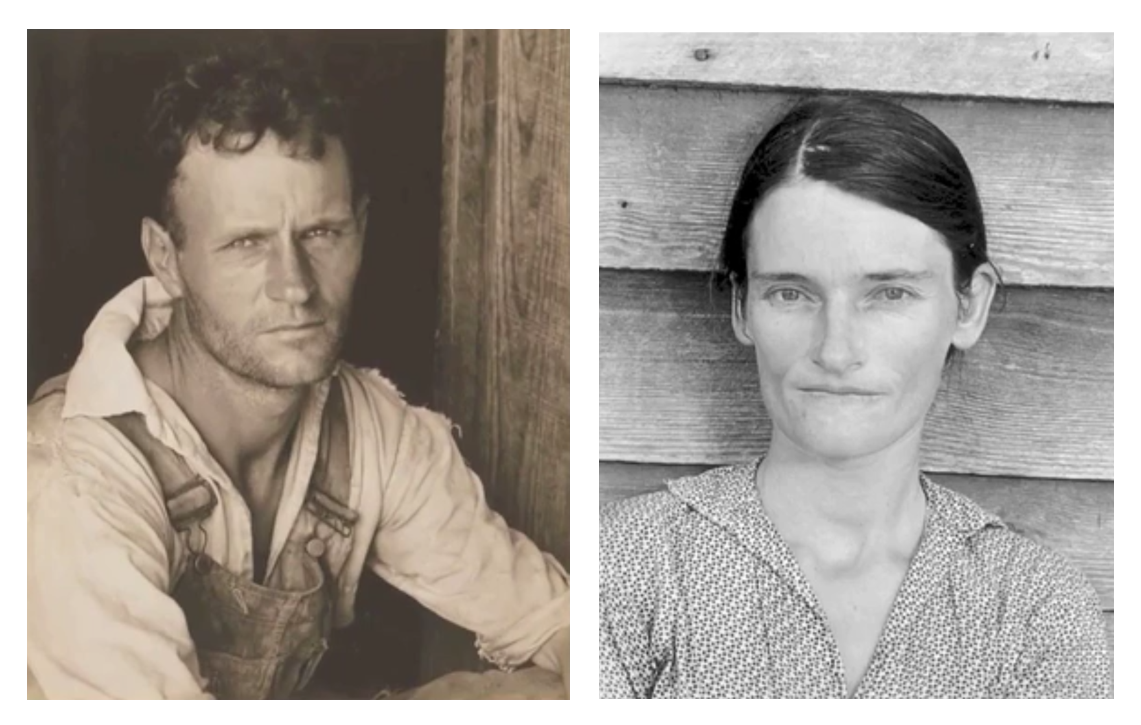
1935-1936
Photographs
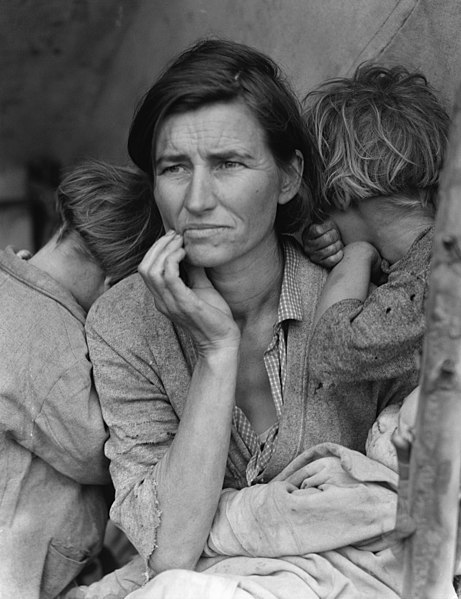
1936
Photograph
These photographs are examples from two parts of the country documenting the suffering that was taking place during the Great Depression, but doing so in an artful manner.
Lange’s photo in particular has become one of the most recognized images from the Great Depression, depicting a 32-year-old mother of seven (eventually, she was a mother of 10) looking to the side as if contemplating her family’s future while her children grasp onto her. It’s a heart-wrenching portrayal of the reality facing rural farmers and workers of the 1930s.
The photographer Gordon Parks was the only African American hired by the FSA, and he provided a look at the reality facing African Americans during this time as well.
His parody of Wood’s “American Gothic” painting features a cleaning woman named Ella Watson, who worked at the FSA building in Washington.
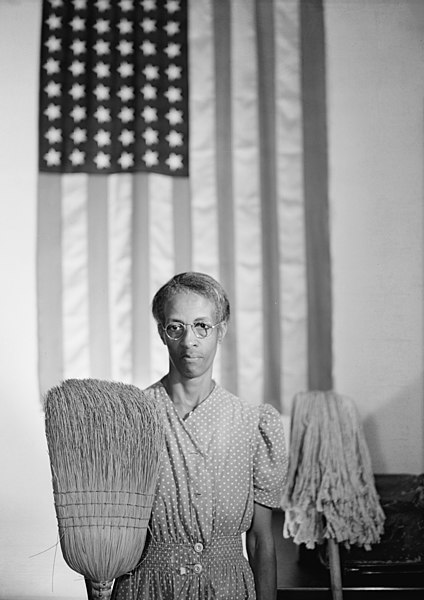
1942
Photograph
She’s holding a broom and mop. It was a rather controversial photograph, but it raised awareness among many of the additional struggles that African Americans faced with the prevalence of racism even in the nation’s capital.
Source: This work is adapted from Sophia author Ian McConnell